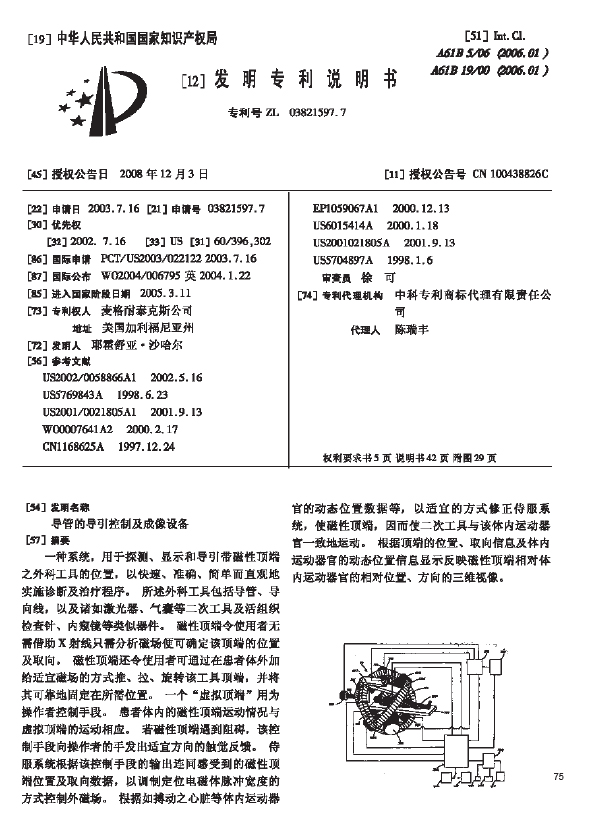PATENTS
Apparatus For Catheter Guidance Control And Imaging
Patent Number: CN 100438826C
Date Filed: December 3, 2008
Country Filed In: China
Product Application: CGCI
Description:
A system whereby a magnetic tip attached to a surgical tool is detected, displayed, and influenced positionally so as to allow diagnostic and therapeutic procedures to be performed rapidly, accurately, simply, and intuitively is described. The tools that can be so equipped include catheters, guidewires, and secondary tools such as lasers and balloons, in addition to biopsy needles, endoscopy probes, and similar devices. The magnetic tip allows the position and orientation of the tip to be determined without the use of x- rays by analyzing a magnetic field. The magnetic tip further allows the tooltip to be pulled, pushed, turned, and forcefully held in the desired position by applying an appropriate magnetic field external to the patient's body. A Virtual Tip serves as an operator control. The movement of the operator control produces the corresponding movement of the magnetic tip inside the patient's body. Additionally, the control provides tactile feedback to the operator's hand in the appropriate axis or axes if the magnetic tip encounters an obstacle. The output of the control combined with the magnetic tip position and orientation feedback allows a servo system to control the external magnetic field by pulse width modulating the positioning electromagnet. Data concerning the dynamic position of a moving body part such as a beating heart offset the servo systems response in such a way that the magnetic tip, and hence the secondary tool is caused to move in unison with the moving body part. The tip position and orientation information and the dynamic body part position information are also utilized to provide a display that allows three-dimensional viewing of the magnetic tip position and orientation relative to the body part.
Field of Use: The Catheter Guidance Control and Imaging (CGCI) system was created to provide physicians the ability to guide a catheter through a patient's body using a robotically-controlled magnetic guidance system. Such a system provides the physician unprecedented accuracy in being able to navigate within the dynamic environment of the patient, create a detailed 3-D mapping, and perform a variety of catheter-based operations with precision control and an ability to return to target at the push of a button. Initial applications for the technology were for the field of Electrophysiology and specifically for the ablation of the heart to treat patients with AFib.

